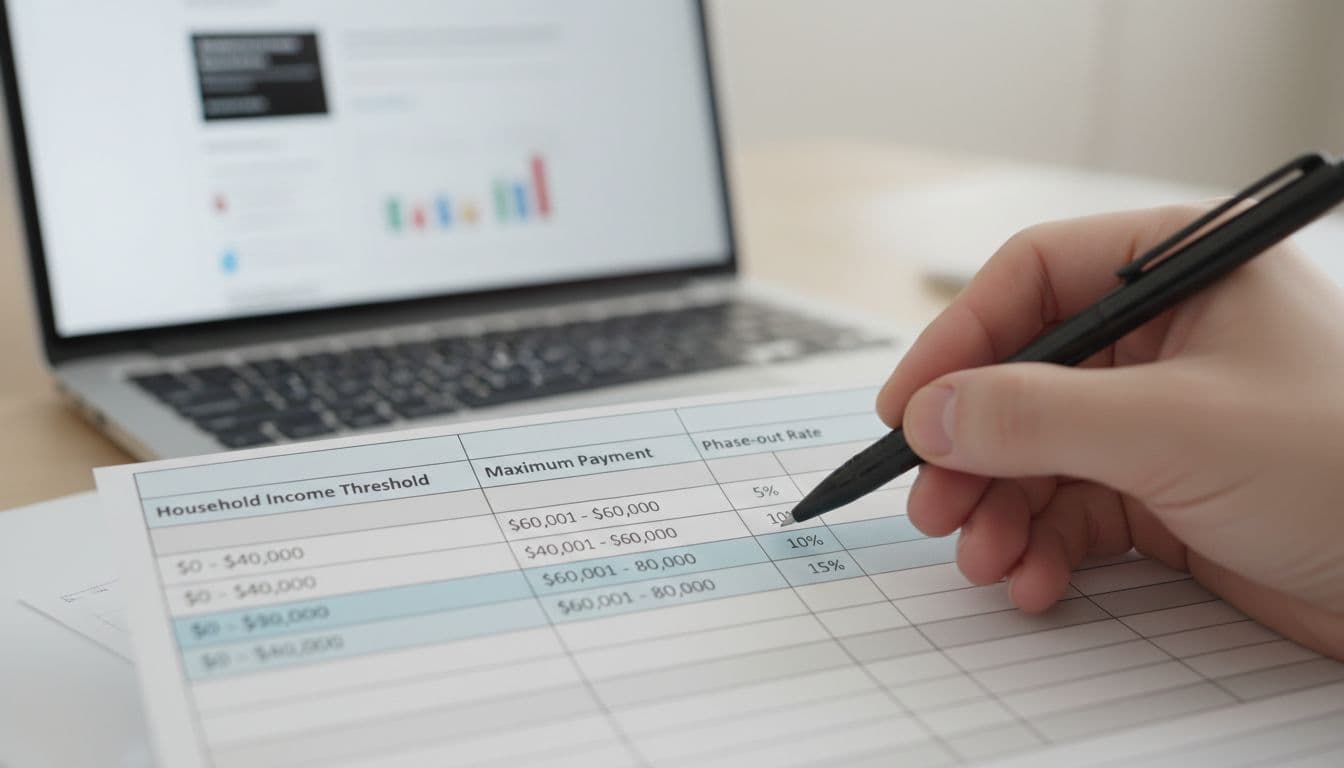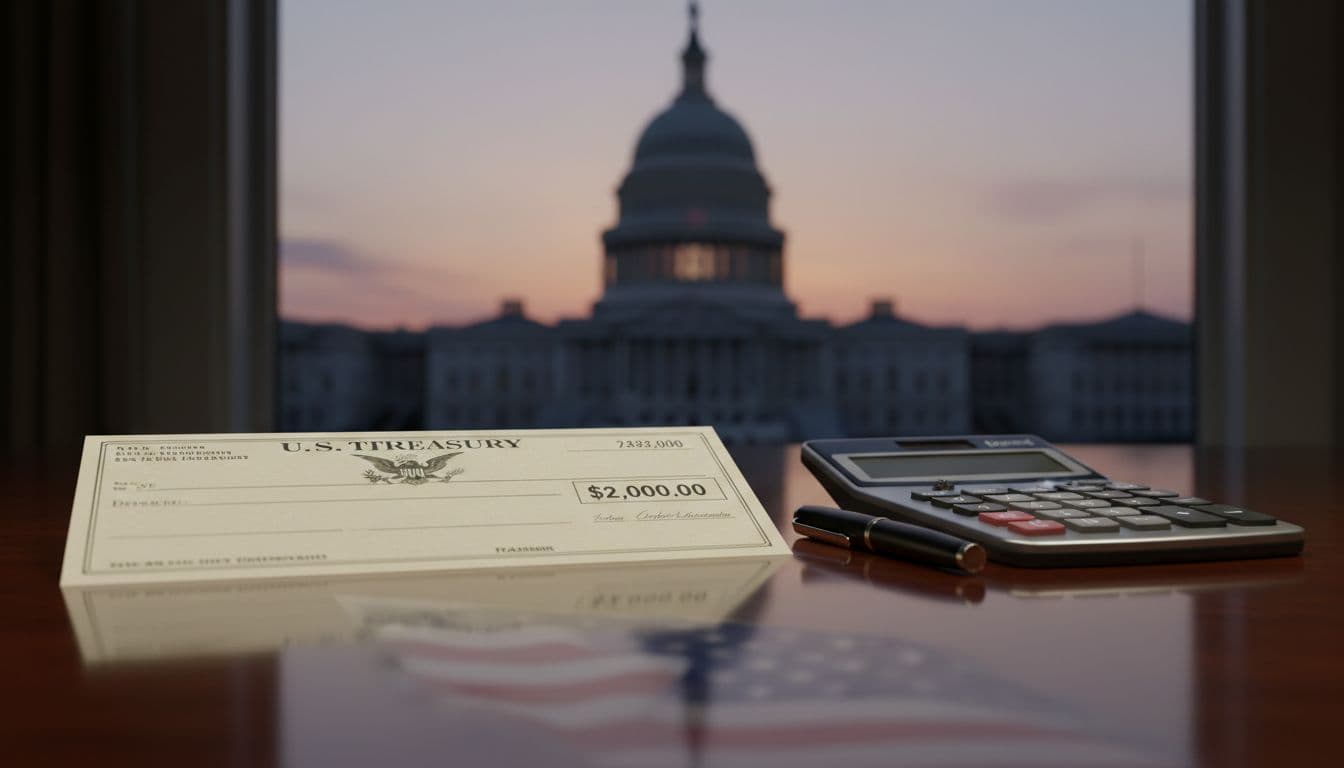Summary: President Donald Trump has renewed calls for $2,000 payments to most Americans, funded by tariff revenue. He touted the idea on Truth Social and again in Oval Office remarks. But despite the attention, Congress has not advanced legislation to enact these checks. Here’s what’s proposed, what’s possible, and what to watch next.
What the President Proposed
In a Nov. 9 post on Truth Social, President Trump praised higher tariffs and said the U.S. is collecting “trillions of dollars,” proposing a dividend of at least $2,000 per person, excluding high-income earners. He followed up on Nov. 10 in Oval Office remarks, adding that remaining tariff revenue would go toward paying down the national debt.
- Payment amount: $2,000 per person has been floated, with income caps likely.
- Funding source: Tariff revenue (import taxes collected at the border).
- Secondary goal: Apply remaining tariff receipts to reduce federal debt.
While presidents can set policy priorities and direct agencies within the law, direct stimulus payments require a bill passed by both chambers of Congress and signed into law.

How We Got Here: A Quick Look Back at Stimulus Checks
Since 2020, there have been three major rounds of direct relief:
- March 2020: $1,200 per adult under the CARES Act.
- December 2020: $600 per adult in a year-end package.
- March 2021: $1,400 per adult under the American Rescue Plan.
Each round required Congressional action and included eligibility rules, phase-outs at higher incomes, and timetables for IRS distribution. The current discussion is different because the suggested funding mechanism is tariff revenue, not general appropriations or deficit financing.
Where Congress Stands Right Now
Congress holds the keys. A previous concept from Sen. Josh Hawley (R-Mo.), the American Worker Rebate Act, proposed smaller payments funded by tariffs. That bill was referred to the Senate Finance Committee in July and stalled. Since then, there has not been notable movement to pass a broader $2,000-per-person plan.
Key hurdles:
- Budget math: Would tariff revenue reliably cover $2,000 per person, and for how many people?
- Inflation and debt: Lawmakers weigh consumer relief against inflation, deficits, and interest costs.
- Bipartisan support: Any bill needs enough votes in both chambers; narrow majorities make this harder.
- Design choices: Income thresholds, residency rules, and whether payments are one-time or recurring.

Can Tariffs Pay for $2,000 Checks?
Tariffs are assessed on imported goods. The government collects this revenue from importers, who may pass some or all of the cost along the supply chain. Whether tariffs can fund broad stimulus checks depends on the rate structure, the volume of imports, and economic effects, including:
- Revenue volatility: If import volumes fall in response to higher tariffs, revenue can decline.
- Consumer prices: Some costs can filter into retail prices, affecting inflation and purchasing power.
- Trade responses: Partners can retaliate, altering trade flows and revenue forecasts.
Any stimulus-by-tariff plan would require detailed scoring from nonpartisan analysts (for example, CBO or JCT) to estimate net revenue versus costs and to craft income limits, payment amounts, and timing.
What This Means for Households
For now, no checks are authorized. Households should be cautious about planning around a potential payment until a bill has passed. If a proposal advances, look for these details:
- Eligibility: Income thresholds, filing status rules, and dependent provisions.
- Payment type: One-time rebate vs. recurring payments; whether it is a tax credit or direct payment.
- Distribution: Direct deposit timelines, address updates for mailed checks, and IRS portal guidance.
- Tax treatment: How the payment is recorded on your tax return; most prior checks were not taxable income.

Common Questions
Is this official? Not yet. The President has endorsed the idea, but Congress has not passed a law authorizing payments.
Who would qualify? The President suggested excluding high-income earners. Actual thresholds would be determined by legislation.
When could checks arrive? If Congress passed a bill and the President signed it, the IRS could begin distribution within weeks, based on 2023–2024 tax data. That timeline depends on the bill text and operational details.
Will tariffs cover the full cost? That’s the central policy question. Analysts would model expected revenue, economic effects, and impacts on prices before a vote.
How to Track Real Updates Safely
- Follow official statements from the White House, the IRS, and Congressional committees.
- Watch for bill numbers, committee hearings, and scoring from the Congressional Budget Office.
- Beware of phishing and scams promising early access to payments.
There is growing talk about $2,000 stimulus checks drawn from tariff revenue, and the President has publicly supported the idea. But payments cannot happen without a law from Congress, and there has been no substantive legislative movement to date. If a bill surfaces and gains traction, expect a debate over affordability, inflation, and design choices like income caps and timing. Until then, consider the checks a proposal, not a certainty.
To contact us click Here .

